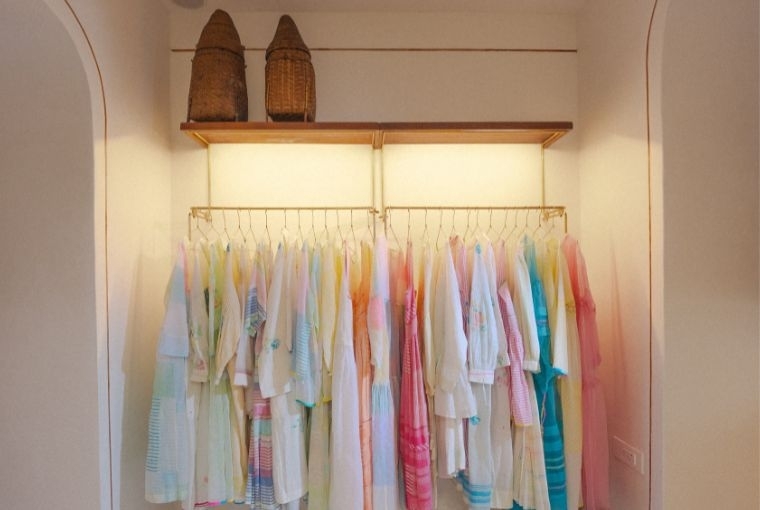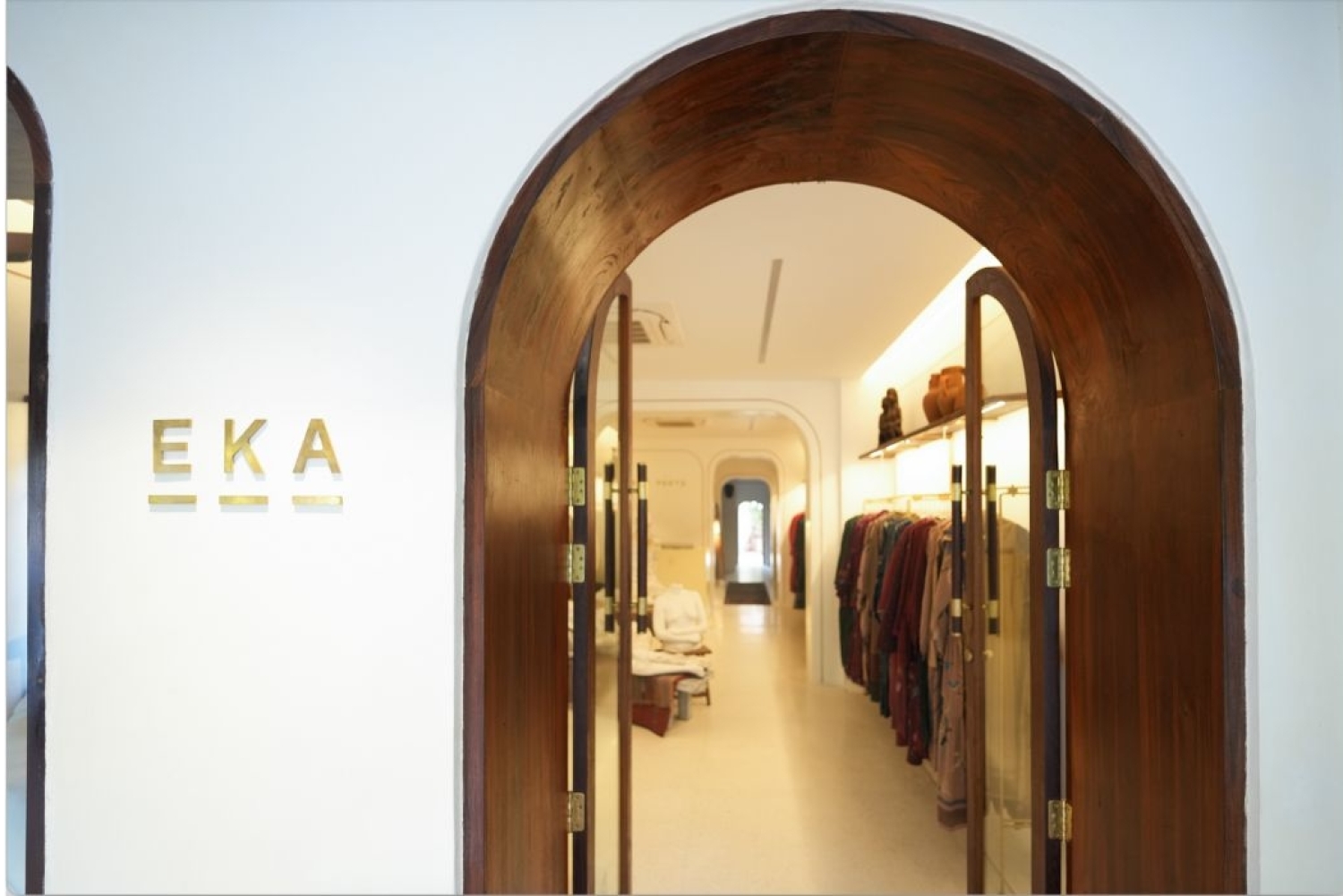

EKA's flagship store in Lodhi Colony, Delhi, stands as a beacon of aesthetic elegance amidst a neighborhood renowned for its delightful ambiance. From its post-colonial façade to the serene park at its front, and the inviting corridor leading to a charming backyard alley, every element of its structure whispers a story—of Rina Singh and her ethos of redefining Indian crafts in a modern context. Complementing the old materials of her clothes, the kind of materials used at the store are also from age-old practices. From aged limestone to refurbished antique wood, the furniture embodies a rich heritage woven seamlessly into modern design. With a meticulous eye for detail, Rina infuses each corner of the store with inspiration drawn from diverse locales, enriching the space with a fusion of fashion and art. On a spring afternoon Rina bestowed us with generous amount of coffee, cake and an insightful conversation around textiles and fashion as a form of expression. Exceprts below.
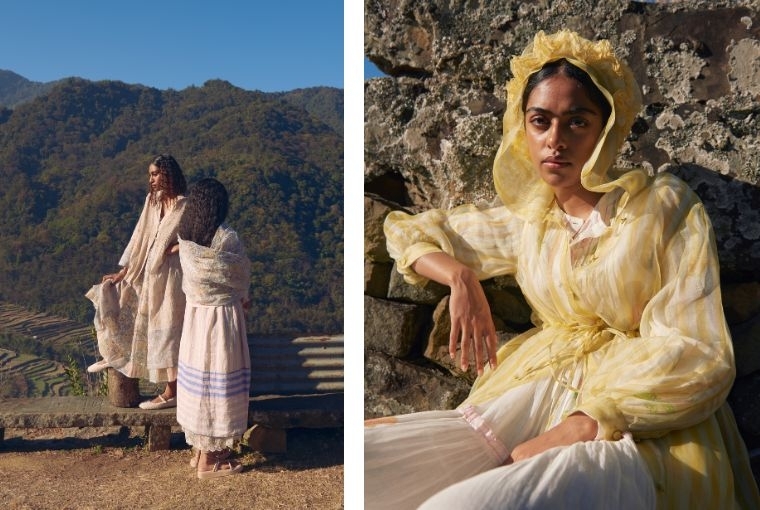
It has been more than a decade of creativity for you, how do you perceive your personal growth and evolution as an individual?
When I had started, EKA was more like a personal project. It was my own space with the kind of clothes I wanted to wear and make. I didn't realize the larger impact of what I was doing on environment. I did realize that there was a huge potential for sustainability or crafts inclusivity to be brand pillars. I'd done a lot of work in crafts before I started since I used to work in NIFT. I researched about the textile industry in our country for about five years. Also, since I was little, my life had been immersed in craft and community.
EKA was just an expression of who I was, what I had done, how I lived my life and what I wanted to wear. You would never find such easy summer-ready clothes and lux textiles in India in those days. When we started to think about retail, the pandemic happened and all of us took a pause. You have to reinvent after every two years with your brands ethos—the design sensibility, what you do and how you do it. The organizational design capacity is already established. But how do you refresh it? What is it that you'll tell the women in this season that she would still want to come back to buy and wear your garment? We have to believe that we are in the business of beauty. And all of us want to express the beautiful side of us. That emotional connect has to be re-instigated every season. Whatever we want to say, there's a language which is soft and poetic.
How challenging has it been?
It's very challenging. Sustainability in fashion is an oxymoron. Honestly, fashion cannot be sustainable because it's not a necessity in the first place. You are creating something that nobody 'needs'. It's a lot to do with the vanity and how we want to really create the world. But having said that, the ethics of what you do, how you do it and how you define that for yourself is important. Sustainability means to be craft inclusive. I will not do anything where I'm not a part of the larger ecosystem of Indian textile traditions. I've always been very vocal about it. It's my design language, it's my intelligence, so I will not walk away from it. Secondly, we always have to speak consciously, whether it is about how you consume the product or how you make the product. And lastly, there needs to be consistency in the visual language.
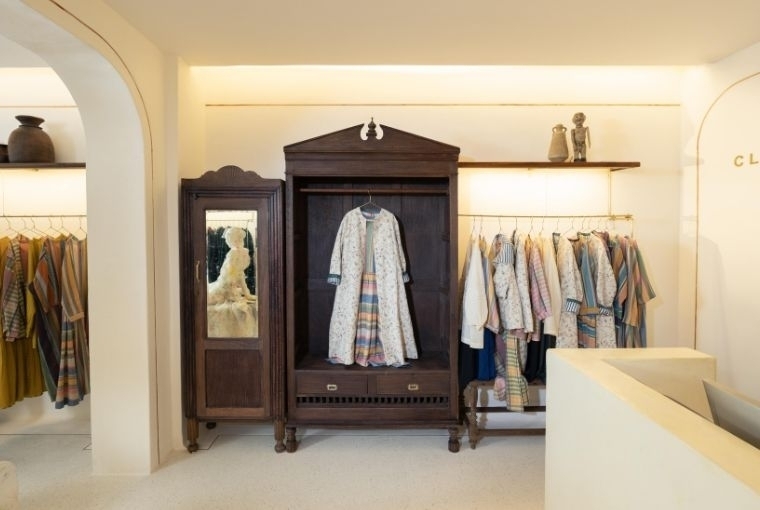
What was the starting point for your new collection, Kohima?
The colllection is a moody nod to Studio Ghibli that’s photographed in Kohima for a picturesque documentation. We are always inspired from traditional textile techniques at EKÁ. We use a lot of hand weaves and prints that’s we redesign and develop each season with a new informed vocabulary. That is fresh with offbeat colour mix and interplay of patterns in an unconventional fashion. Also using Ghibli studios for colour and mood gave us an extensive palatte of pastels and earthy cottage core. We shot it in Kohima - the city of kewhira flowers. Old city with a young soul. That rendered itself to the delicate, poetic story telling that we repeat each season with a feminine dreamy undertones.
Can you talk to us about your new designs?
The fusion of tradition and contemporary design is similar to a delicate dance—one that requires finesse and intuition. For me, it all begins with the tactile beauty of handwoven fabrics. These threads carry stories—their imperfections, resilience and connection to a generation's past. When I touch a handwoven textile, I feel the pulse of history—the hands that wove it, the landscapes it absorbed.
Block printing, too, is a language—a rhythmic conversation between wood and fabric. Each motif imprinted on the surface tells a tale—a whisper of heritage, a nod to craftsmanship. The colors—their hues and harmonies—are my palette. They evoke emotions, memories, and dreams. Sometimes, it’s the quiet blush of dawn; other times, it’s the bold stroke of monsoon green.
As seasons shift, our shapes change. Last year’s silhouette may yield to a new muse—an oversized blazer, perhaps, or a cinched waist. Retro vibes intermingling with contemporary flair. The shoulders—do they drop like petals or stand tall like ancient columns? It’s a symphony of possibilities.
This season, our canvas was a quaint cottage—a refuge from the world’s chaos. The prints dance like sun-kissed leaves and the language of color whisper secrets. Imagine Studio Ghibli meets a sleepy hamlet—the sweetness of innocence with the magic of everyday life. Together, we marry tradition and innovation. Our textiles—each thread and stitch—become vessels of expression. I don’t need a handbook; I have intuition. Embroidery and block printing—these are my tools, my whispers to the world. And so, in this delicate dance, we weave narratives—threads that connect us to the past, the present, and the yet-to-be. As the loom hums, we honor tradition, reimagine silhouettes, and let color paint our stories.
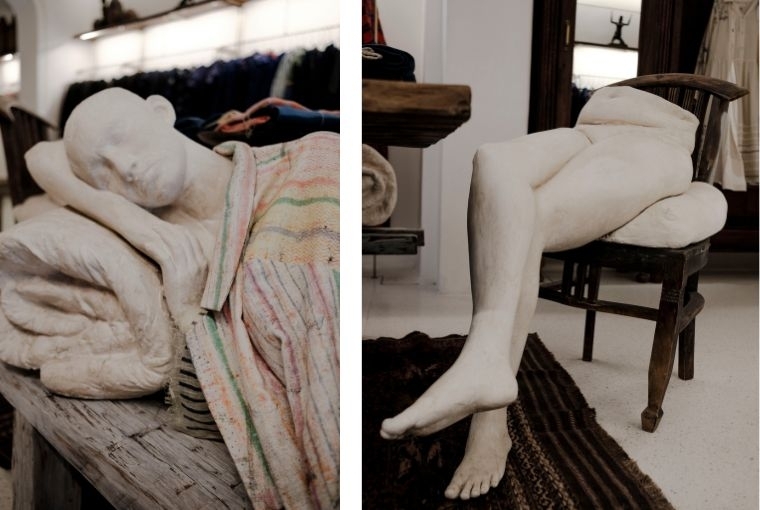
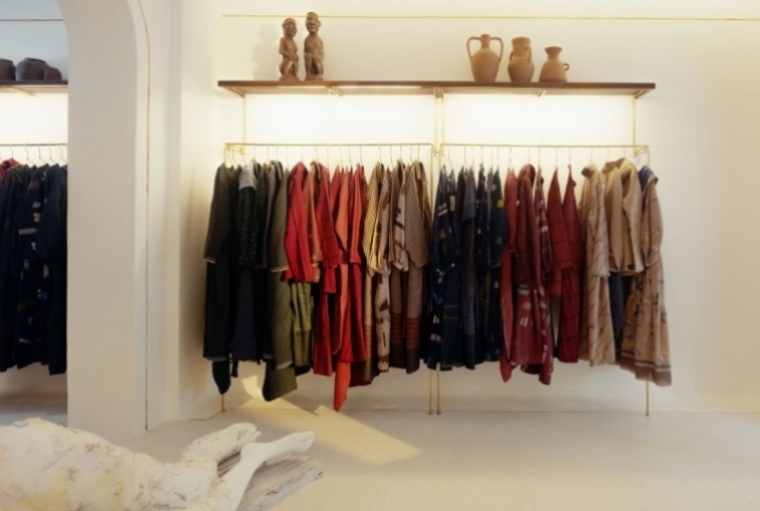
What according to you is the fashion of now?
It’s very diverse today. The one uniform voice that the West still believes of India is the ceremonial and the luxury. I don't blame them because there are not enough people telling the story of every day. Everybody just wants to recreate the nostalgia of the yester years because it is so glorified. Largely, there's one single story that comes out of a country when you say fashion or clothing; there's only one story coming out of India which is a misfit. It's not a reality. Our fashion is in the streets. The streets are so neglected. Here, you see a variety of people, the small towns, the big cities, the metros, and not just the fashion circles.
What were your initial thoughts about the store and how did you translate them on paper?
The store is designed by me and my husband, Sandeep. I wanted the store to have Indian aesthetics. I didn't want any modern fitments or anything. And also, I wanted to work with a lot of age-old materials that resemble the textiles that I work with. There is brass, limestone, lot of terracotta and there is a lot of wood. Mostly, all natural materials. Everything that can breathe. An architect friend of mine helped us make this come to life. Him and his team moved base from Auroville to Delhi for five months. The artisans, who work on limestones, were brought here from Porbandar. Also, limestone is very slow process. You do one layer, then you sit with it, then another layer and so on. The sourcing was done by me.
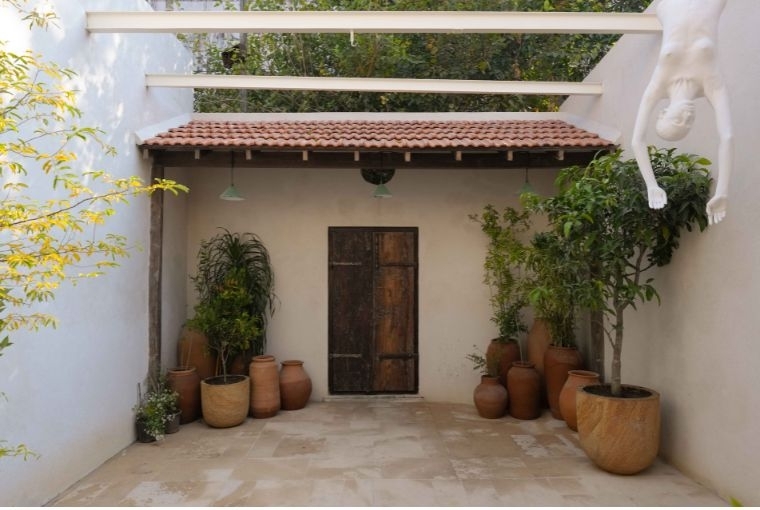
Do you still follow a creative process?
We do a lot of research while creating. Some of our textiles are very intense in terms of work, there are as many as 28 different blocks coming together. I would say we are very academic in our approach. We asked ourselves a lot of questions for this collection; is it going to be cotton silk? or is it going to be hundred percent cotton and a hundred percent linen? Are we goinf to fo 12 weaves, or are we going light on our weaves? A brand is many other people at work and not just you. But I think the aesthetic emerges from a solo space, where I feel that the way I look at it would be very different because the thinking process is different for everyone.
Textiles happen as early as a year before the season launches. The textiles are given for making and we do our cards, color waves and weaves. We make our blocks and do the color separation. By the time, the weavers send the textiles back, the block printmakers send the blocks back. We start doing the R&D in the studio with the shapes and the embroidery. And we start experimenting with the kind of shapes that we are working with. It is a long process.
Words Hansika Lohani
Date 12.04.2024
